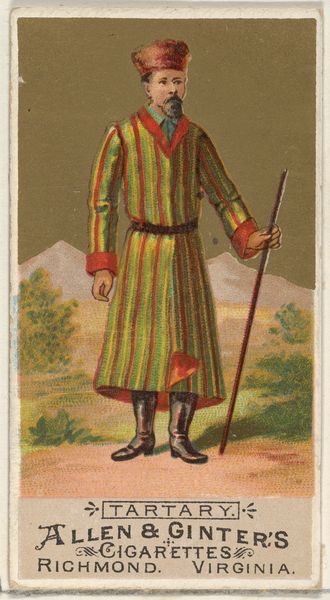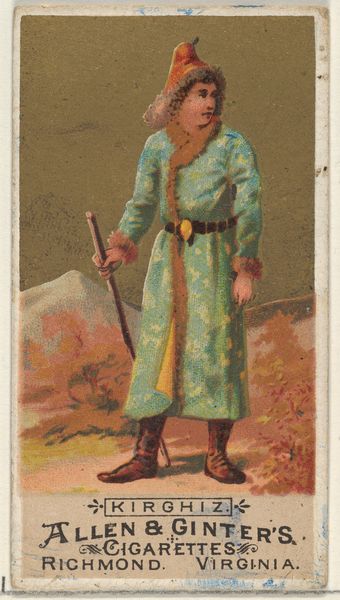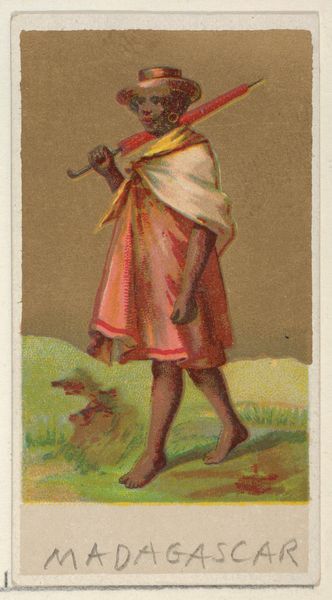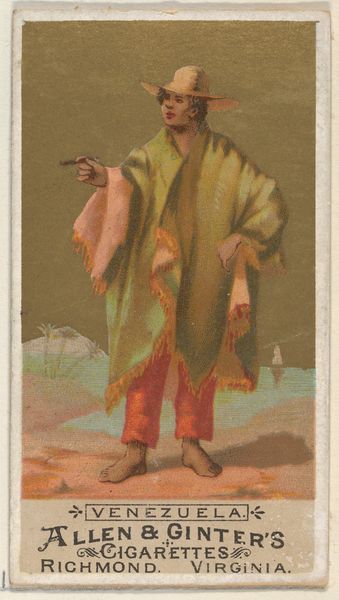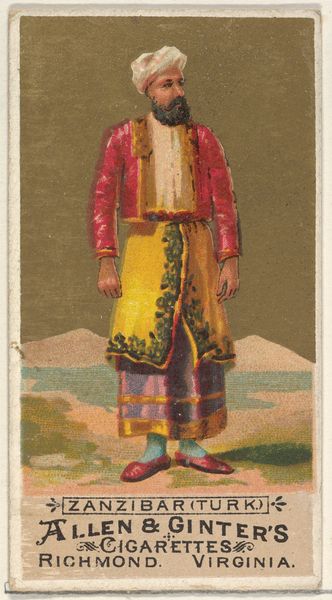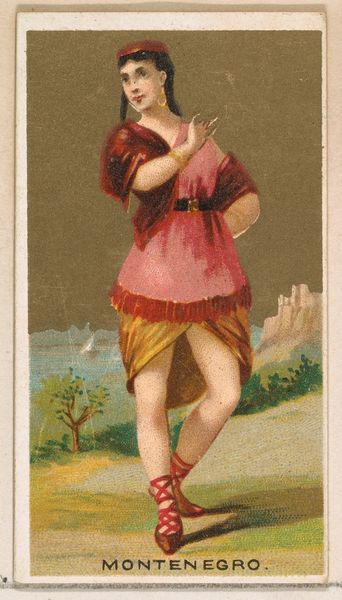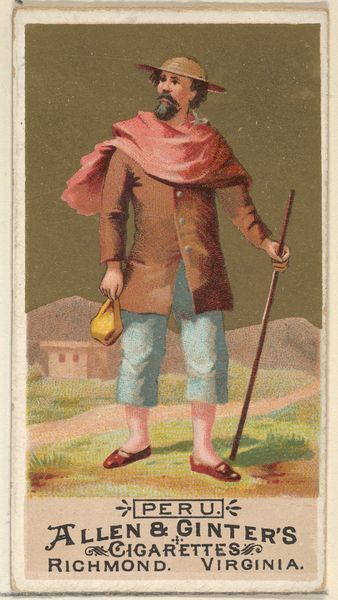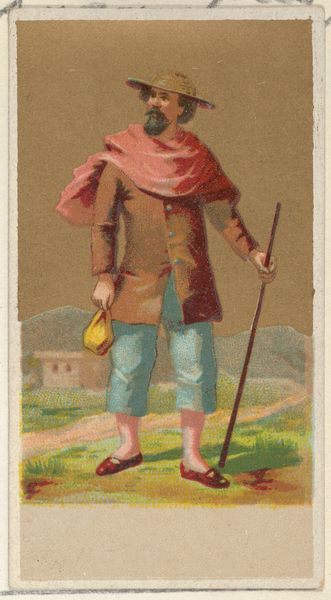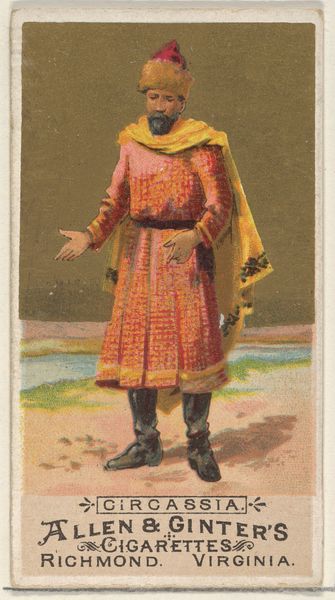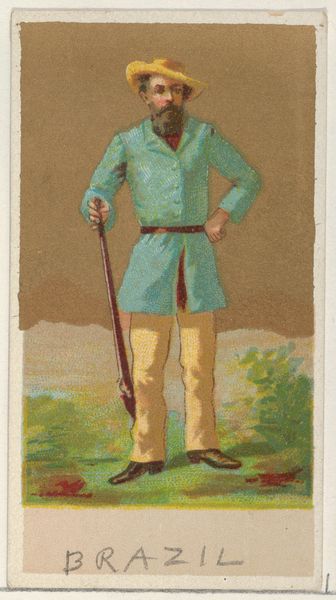
Hindustan, from the Natives in Costume series (N16), Teofani Issue, for Allen & Ginter Cigarettes Brands 1886 - 1900
0:00
0:00
drawing, print, gouache
#
portrait
#
gouache
#
drawing
#
water colours
# print
#
gouache
#
oil painting
#
coloured pencil
#
orientalism
#
watercolour illustration
#
genre-painting
#
watercolor
Dimensions: Sheet: 2 3/4 x 1 1/2 in. (7 x 3.8 cm)
Copyright: Public Domain
Curator: Here we have a chromolithograph card titled "Hindustan, from the Natives in Costume series," a vibrant piece produced by Allen & Ginter between 1886 and 1900. Editor: The striking color palette immediately catches my eye. There is a definite theatricality to the costume, with a patterned robe, red leggings, and a green turban creating an arresting, if not exoticized, image of a man from Hindustan. Curator: Absolutely, and it’s important to remember these were cigarette cards, essentially cheap printed ephemera. These were mass-produced using chromolithography. One of the main purposes was for brand recognition in a booming market, with the "Natives in Costume" series intended to showcase the exotic locales where tobacco was sourced. Editor: The costuming seems symbolic. The layering and wrapping of fabric may have represented social class and regional identification, though I suspect here those elements were being simplified for the Western eye. How accurate could the depiction have been? Curator: I agree, the details and material suggest an effort to convey authenticity. Yet, one must question the representation inherent in these series. Orientalism is apparent, but even then, consider the role of low wage immigrant laborers producing these illustrations, many of whom could draw from direct experience of the global networks that supplied this tobacco. Editor: Right, that connection between consumption, labour, and imagery is potent. Looking at the card as a symbol itself, a small token meant to be collected, suggests something of the commodification of culture. The symbolism is really complex and rich when considering the artwork's status as a trade good. Curator: It’s quite interesting that we can study labor and colonialism just by looking at this material object and thinking through the hands that touched it, and places it traveled. Editor: This exploration, both visual and contextual, allows one to see this little card as so much more than an image. It is a little sign of global commerce, colonialism and visual tropes that persist even to this day.
Comments
No comments
Be the first to comment and join the conversation on the ultimate creative platform.

